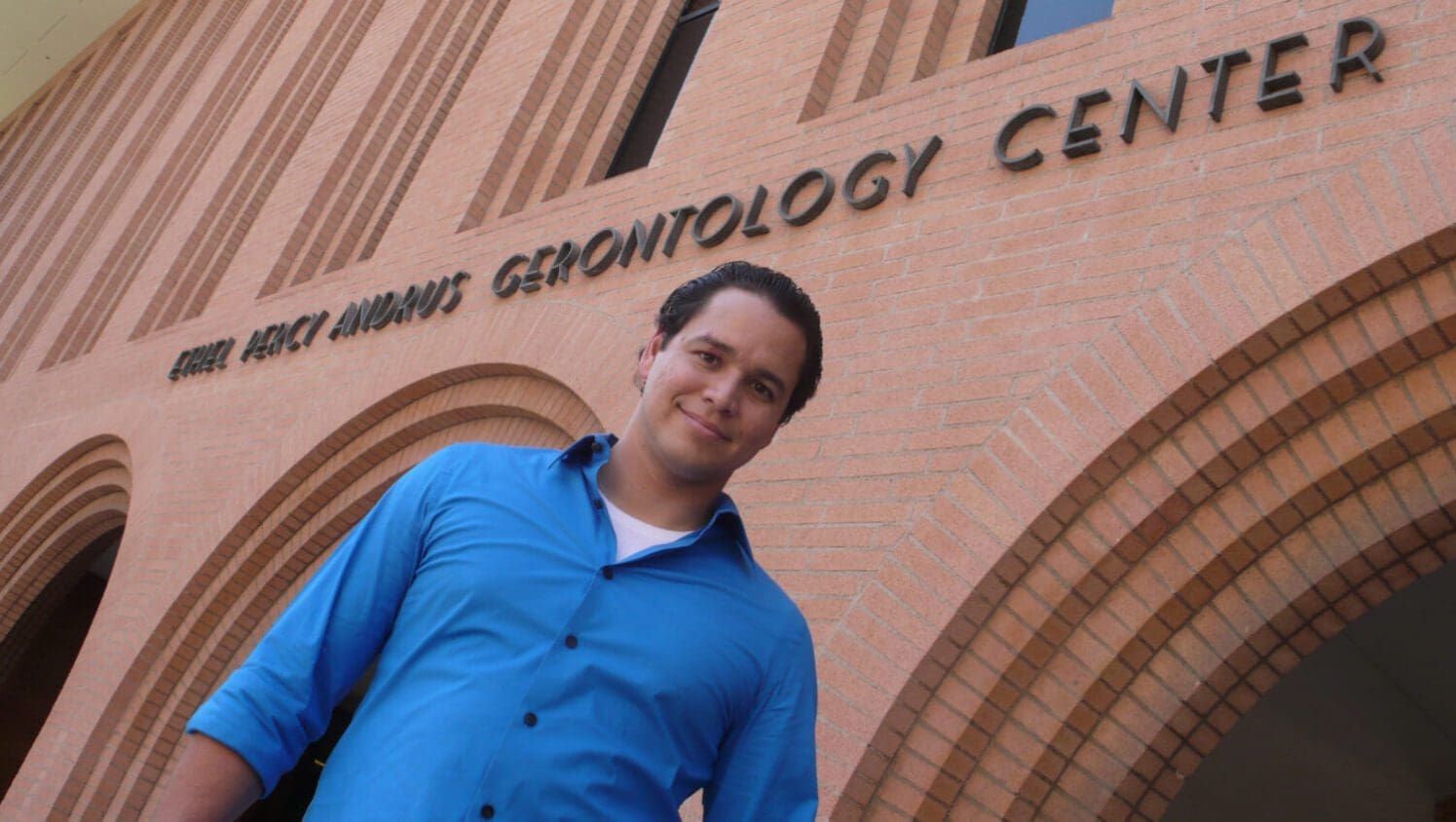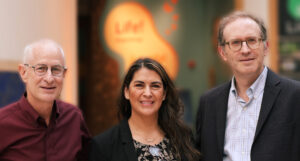The USC Leonard Davis School of Gerontology took center stage at the 65th annual scientific meeting of the Gerontological Society of America (GSA), held this year in San Diego.
As always, the field’s preeminent conference provided multiple opportunities for USC Leonard Davis students, faculty and alumni to shine, as well as for the School’s popular reception to anchor the social and networking side of the event.
“I was so proud to see USC represented so strongly all over GSA,” said Emily Nabors, program coordinator and evaluator for the School’s Fall Prevention Center of Excellence. “It’s so inspiring to see the breadth and depth of the work done at USC while also gaining new insight into what our colleagues around the world are doing.”
Under the umbrella of GSA’s 2012 theme, “Charting New Frontiers in Aging,” USC Leonard Davis School faculty covered a variety of topics, including Tuck Finch on Alzheimer’s disease, Elizabeth Zelinski on gerontechnology, Bob Knight on psychological assessment and interventions, Kate Wilber on elder abuse prevention and Tara Gruenewald on the intersection of socioeconomic and physical health. USC Leonard Davis doctoral students were also well represented among the experts, including Joohong Min on Korean Baby Boomers, Shoshana Hindin on aging’s effect on language acquisition, Shieva Davarian on the health of older Japanese adults and Alison Balbag on music as preventative dementia therapy.

Trojans had much to celebrate, and attendees to the USC Leonard Davis School reception offered a champagne toast to the School’s Eileen Crimmins, who was not only inducted into the Institute of Medicine but also won GSA’s 2012 Robert W. Kleemeier Award for her outstanding research. Another reason to celebrate was the fact that the School is on the cusp of its twentieth anniversary bestowing PhDs in gerontology, with the world’s first going to Valentina Villa in 1993.
“It was really wonderful to see such ‘old’ friends and to meet graduates of later cohorts,” said Sandy Reynolds of the University of South Florida. “As a USC Leonard Davis School PhD alum, what a joy to be able to celebrate the ongoing success of our PhD program in a year where we also celebrate Eileen Crimmins, since she has had such an important role in the success of the program.”
Along with the aforementioned “old” friends, Trojans were equally enthusiastic to welcome and rally behind newer friends, especially Pinchas Cohen, who was delighted to attend his first GSA as dean of the USC Leonard Davis School.
“It is a great honor to be among such world-class colleagues and friends who share our dream of a better quality of life for every aging person,” Cohen said. “I am proud of all of our extremely talented Trojans, near and far, who work every day to bring this dream one step closer to reality.”
Click here for a complete list of all programs, presentations and posters.






 Eileen Crimmins, PhD, AARP Chair of the USC Leonard Davis School of Gerontology, capped off an impressive year with her election to the Institute of Medicine (IOM), one of the world’s most prestigious honors in the fields of health and medicine.
Eileen Crimmins, PhD, AARP Chair of the USC Leonard Davis School of Gerontology, capped off an impressive year with her election to the Institute of Medicine (IOM), one of the world’s most prestigious honors in the fields of health and medicine. Helping older adults has been USC Leonard Davis School of Gerontology graduate student Brenda M. Vázquez’s day job for almost a decade, but she prides herself on continuing to search for new avenues and opportunities to serve.
Helping older adults has been USC Leonard Davis School of Gerontology graduate student Brenda M. Vázquez’s day job for almost a decade, but she prides herself on continuing to search for new avenues and opportunities to serve.




